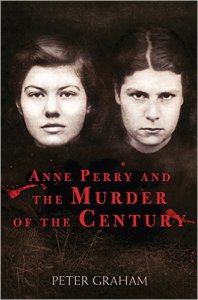 Non-Fiction
Non-Fiction4*s
New Zealand on a fine wintery day in June 1954 a woman, her daughter and her daughter’s best friend took a walk in nearby Victoria Park. The little group stopped at a tea kiosk for refreshments and then walked further into the park. The next thing Agnes Richie, owner of the tea kiosk knew was that the two girls turned up screaming that Pauline’s mother Mrs Rieper had fallen, and there was lots of blood. There was no fall, Mrs Rieper had been bludgeoned to death by the two fifteen year old girls.
Peter Graham takes a forensic look at the circumstances that led up to the killing of Mrs Rieper, soon to be known as Honorah Parker, in the newspapers, because if the indignity of being the victim of matricide wasn’t enough, Bill, Pauline’s father had to disclose that the couple had never married despite having had four children together. The natural place to start is the friendship between the wealthy Juliet Hulme and Pauline Parker, especially as the rumours were that the two girls were in a lesbian relationship and the author takes us through a comprehensive look at the facts, mainly supplied by Pauline’s diary but supplemented by the stories the two girls wrote and a few comments from contemporaries. He doesn’t leave it there the circumstances of both families are examined with microscopic detail to look for clues on where the seeds were sown for such an unnatural crime. Indeed rates of matricide, a fairly rare crime in itself, but when split by gender exceptionally so. Indeed those who commit this particular crime tend to be adult women living with elderly mothers, not teenage girls.
The book is fascinating, it starts with the scene of the crime and then looks backwards into the family details before moving onto the questioning of the girls and their eventual trial. If anything a lot of the details about Henry’s work as a scientist seemed a little superfluous but if nothing else it gave context, and indeed contrast, between the lives the two girls lived. The author tries, and in my opinion fails, to come up with an underlying mental illness for either girl, but as in the examination of their family set-ups, he doesn’t ever impose his views, rather gives the facts and lets the reader come to their own conclusion.
The big difference in this account is that we know what happens after the trial, after the two girls were released mainly because one of them became a famous author, of crime fiction. Her identity was discovered when in 1994 Peter Jackson directed the film Heavenly Creatures about this crime, then thirty years after the event. Anne Perry was alive and well, living in Scotland having succeeded in becoming a successful author. It is hard to put out of your mind the stories to the two friends wrote together, heavily inspired by the films they watched and their fertile imaginations. Pauline Parker was also tracked down by keen journalists, she also no longer lived in New Zealand but had settled in England under a new name.
This was a fascinating read although it is often the truth that as much as we want to, we learn little from murderers through true crime. The two girls in this instance, hatched a plan without any idea of what killing someone really entailed and as a result were quickly caught. Their plans to go to America and meet the film stars and become writers, didn’t come true… but for one of them it almost did.
I chose to read this book when I learned that Harriet Said by Beryl Bainbridge was inspired by this crime which was front page news around the world at the time. I thought that I would follow up with a book by Anne Perry herself, but to be honest I don’t have the stomach for that at the moment, but I have bought a copy of Heavenly Creatures to watch.
First Published UK: 2013
Publisher: Skyhorse Publishing
No of Pages: 325
Genre: Non Fiction – True Crime
Amazon UK
Amazon US
- More





